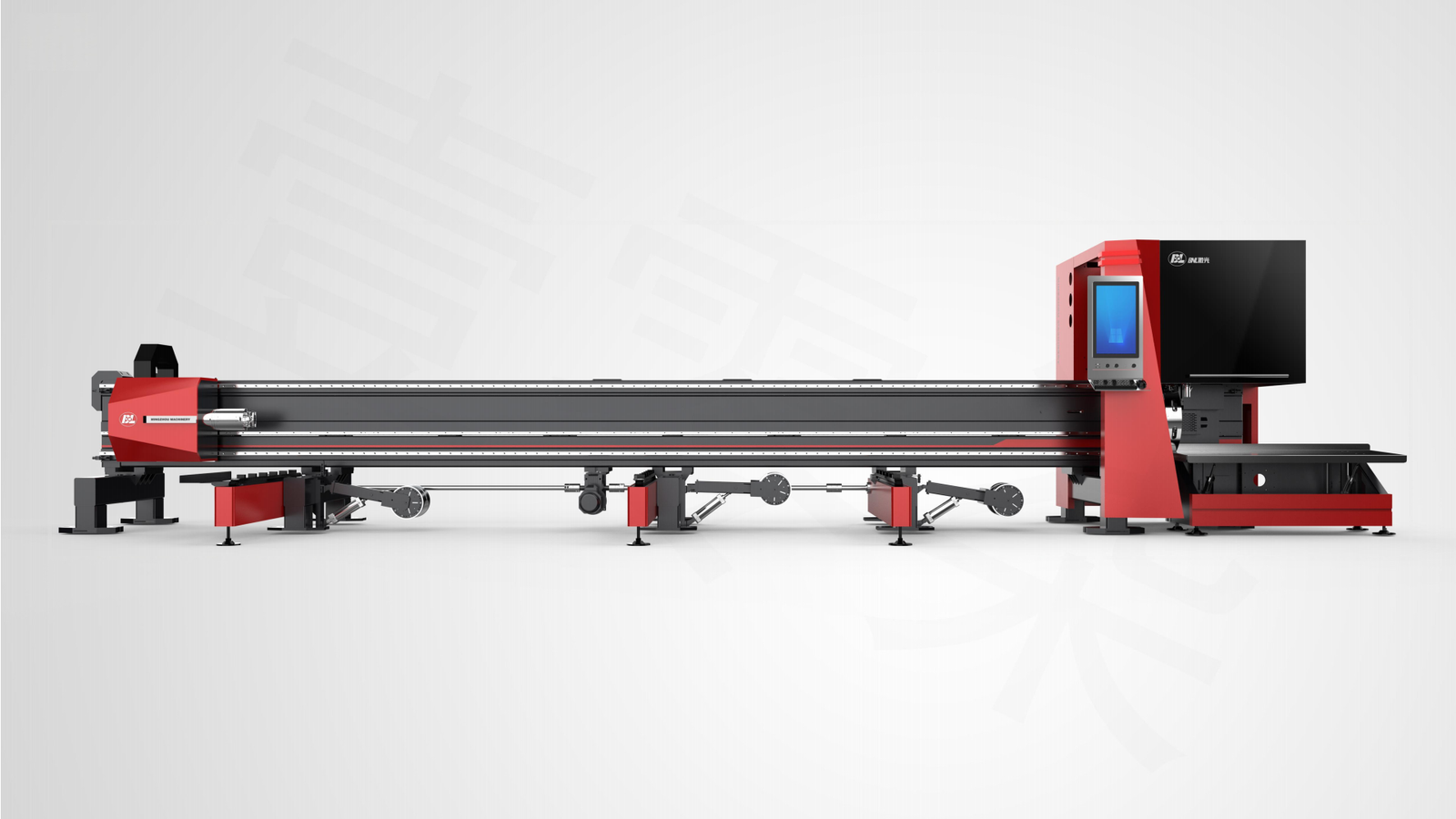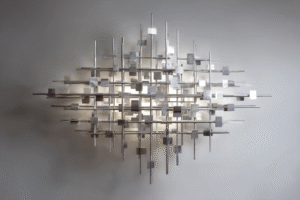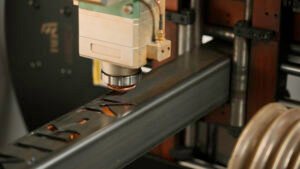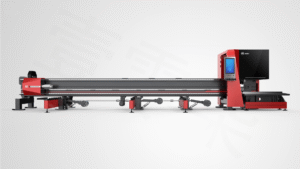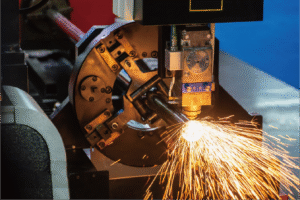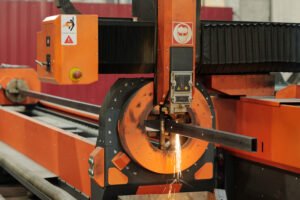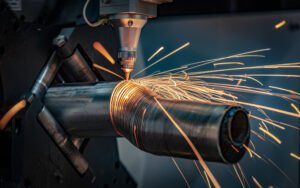Metal Boru Kesme Makineleri Nasıl Çalışır? Manuelden Akıllı Sistemlere
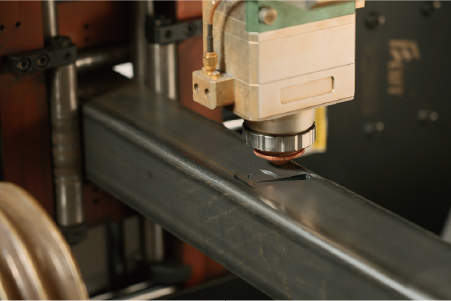
Are your metal tube fabrication processes still slow, inefficient, and prone to errors? This can lead to significant production bottlenecks and escalating costs, impacting your bottom line. But what if there's a smarter, more precise way to transform your operations, boosting efficiency and profitability?
Metal tube cutting machines have evolved dramatically from labor-intensive manual methods to advanced, automated systems. These smart systems leveraging precision engineering and digital controls enhance efficiency, reduce waste, and deliver superior accuracy in fabricating complex metal components, directly addressing modern manufacturing demands.
The journey from rudimentary hand tools to sophisticated CNC machines marks a paradigm shift in manufacturing efficiency. Understanding this evolution is crucial for any business looking to stay competitive and adopt future-proof solutions. Join me as we explore the foundational principles of tube cutting and uncover the revolutionary advancements reshaping the industry1.
For decades, metal fabrication relied heavily on manual labor, with skilled artisans meticulously cutting and shaping tubes. While traditional methods offered flexibility for small-batch or custom work, they were inherently limited by human speed, precision, and consistency, leading to bottlenecks and inconsistent quality. However, the relentless pursuit of higher output, reduced costs, and superior accuracy spurred a technological revolution. Today, we witness the culmination of this drive in intelligent, automated systems that don't just cut; they optimize, analyze, and even self-correct. This fundamentally alters the production landscape, moving from the earliest hacksaws to today's laser marvels, with each iteration pushing the boundaries of what’s possible, promising not just faster production but entirely new design possibilities for metal components.
Introduction to traditional manual metal tube cutting methods
Remember the days of cumbersome manual tube cutting? It often meant slow production, inconsistent quality, and immense labor, directly impacting project timelines and profitability. Let's look back at how we used to operate and the foundational challenges that spurred innovation.
Traditional metal tube cutting methods, such as sawing, abrasive cutting, and mechanical shearing, relied heavily on manual labor and basic machinery. These techniques, while fundamental, typically resulted in lower precision, increased material waste, and required extensive post-processing due to rough edges or burrs, hindering modern production demands.
My career in metal fabrication spans 25 years, and I’ve seen firsthand the painstaking effort involved in manual tube cutting. It was a time when precision often depended on the individual's skill and patience, leading to bottlenecks and inconsistent output. This experience truly highlights the significant strides we've made. For instance, in a project for a custom furniture manufacturer years ago, a complex batch of tubular frames required countless hours of manual cutting, deburring, and re-measuring, significantly delaying delivery. We can appreciate how far we've come only by understanding the inherent limitations and inefficiencies in these conventional approaches. Let's delve into the specifics of these methods, exploring their advantages and, more importantly, their drawbacks in a modern production context.
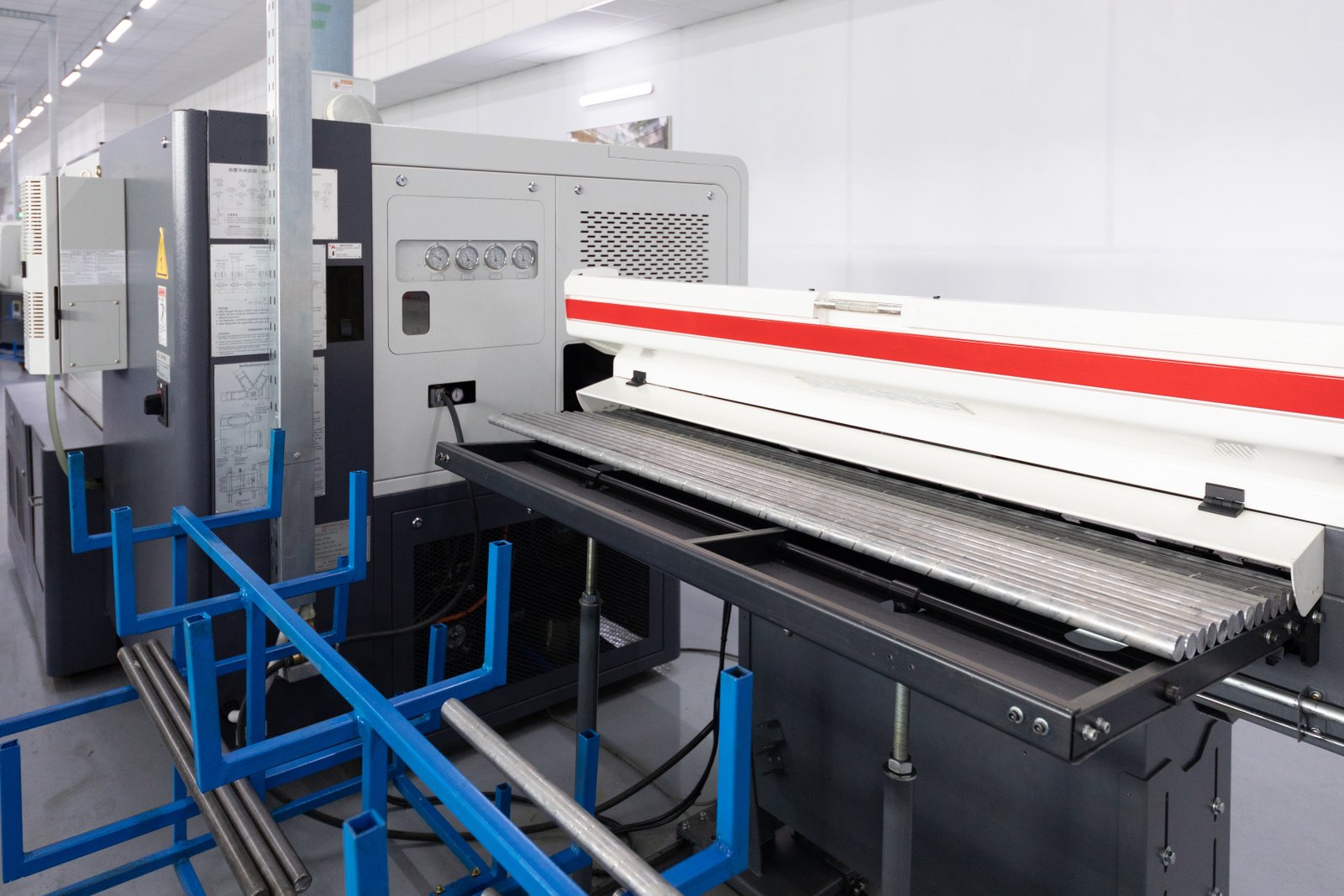
Hand Tools and Basic Machinery: The Foundation
Historically, metal tube cutting began with simple hand tools and basic mechanical devices. The hacksaw, a staple in any workshop, allowed for rudimentary cuts, but its accuracy was entirely dependent on the operator's skill and steady hand. For higher volumes or thicker materials, early mechanical saws like abrasive chop saws and band saws came into play. Abrasive saws, using a spinning disc, could cut quickly through various metals but often left rough, heat-affected edges requiring extensive secondary finishing. Band saws, on the other hand, offered a cleaner cut and were suitable for a wider range of materials and shapes, yet their speed was limited, and setup for each cut could be time-consuming. These methods were cost-effective for small-scale operations or one-off jobs, providing a low barrier to entry for many fabrication businesses.
However, the inherent drawbacks of these foundational methods quickly became apparent as demand for higher precision and volume grew. The manual nature of operation meant inconsistent quality across batches, leading to higher rates of scrap material. Furthermore, the speed of production was directly tied to human endurance and skill, creating bottlenecks that severely limited throughput. For a business like MZBNL, focused on high-tech solutions, these manual techniques highlighted a clear need for automation and enhanced precision.
The Rise of Mechanical Shearing and Punching
As the industry evolved, mechanical shearing and punching machines offered a step up in efficiency for specific tasks. Hydraulic shears provided faster, cleaner cuts for straight sections of tubing, particularly beneficial for structural components where consistent length was key. Punch presses, often equipped with specialized dies, allowed for rapid creation of holes or notches, replacing time-consuming drilling or manual notching processes. These machines significantly reduced the labor intensity for repetitive tasks and improved the consistency of individual cuts or hole patterns. For example, a furniture manufacturer needing thousands of identical tube sections for chair legs would find these machines invaluable compared to manual sawing.
Despite their advantages in speed and consistency for certain operations, these mechanical methods still had significant limitations. Changing dies for different hole patterns or tube sizes was a time-consuming process, limiting flexibility for varied production runs. The machines were often single-function, meaning a tube might need to pass through multiple machines (cutting, then punching) to complete a part, increasing handling and overall lead time. This fragmented workflow created bottlenecks and required significant manual intervention, contrasting sharply with the integrated solutions sought by modern enterprises like Ahmed Al-Farsi’s metal fabrication business, which needed comprehensive solutions for railing and shelving production.
Limitations and the Drive for Automation
The cumulative limitations of traditional methods—high labor costs, heavy reliance on operator skill, significant material waste, and extensive post-processing requirements—became major impediments to growth and profitability. Consider that manual cutting processes could easily lead to 10-15% material waste due to imprecise cuts, improper nesting, and operator error. This not only added to material costs but also increased waste disposal expenses. Moreover, the lack of design flexibility was a significant constraint; complex geometries, intricate cut-outs, or precise angles were often impossible or prohibitively expensive to achieve manually. This meant businesses were limited in the types of products they could offer and their ability to innovate. The need for a paradigm shift was undeniable, driving manufacturers to seek automated solutions delivering higher precision2, speed, and versatility while minimizing waste and labor. This quest for efficiency and cost reduction paved the way for the development of sophisticated CNC and laser cutting technologies.
| Geleneksel Yöntem | Advantages | Disadvantages | Typical Waste % (approx.) |
|---|---|---|---|
| Hacksaw / Manual | Low Cost, Portable | Slow, Low Precision, High Labor, Inconsistent | 10-15% |
| Abrasive Saw | Fast Cuts, Low Initial Cost | Rough Edges, Heat Affected Zone, Noise | 8-12% |
| Band Saw | Cleaner Cuts, Versatile | Slower Than Abrasive, Limited Speed for Volume | 5-10% |
| Mechanical Shear | Fast for Straight Cuts, Consistent | Limited Flexibility, Die Changes, Single Function | 5-8% |
Manual cutting causes material wasteDoğru
Traditional manual methods like hacksaws typically result in 10-15% material waste due to imprecise cuts and operator error.
Mechanical shearing is versatileYanlış
While mechanical shearing offers fast straight cuts, it's limited in flexibility and requires time-consuming die changes for different patterns.
Evolution and current advancements in smart tube cutting systems
Are you struggling with outdated, inefficient tube cutting processes? Manual methods slow down production, consume excessive labor, and eat into profits, making it hard to compete. Discover how modern smart systems offer unparalleled speed, precision, and efficiency, transforming your manufacturing capabilities.
Smart tube cutting systems represent a significant leap, integrating advanced laser technology, CNC controls, and AI-driven software for automation. These systems offer unparalleled precision, multi-process capabilities, and real-time optimization, revolutionizing efficiency and material utilization in modern fabrication facilities worldwide.
Witnessing the transformation from laborious manual operations to sophisticated smart systems has been truly inspiring throughout my 25 years in this industry. At MZBNL, we've been at the forefront of this revolution, investing heavily in R&D to push the boundaries of what's possible, leading to over 30 patents and serving 4000+ global enterprise clients3. Our experience, working with diverse businesses from Southeast Asia to North America, has shown us that embracing these advancements isn't just about cutting faster; it's about unlocking new levels of productivity, design freedom, and cost efficiency. For example, a client in the automotive sector recently told us how our laser tube cutting machine enabled them to produce complex exhaust systems with previously unimaginable precision, drastically reducing assembly time. Let's explore the groundbreaking innovations that define today's smart tube cutting landscape and how they address the shortcomings of the past, offering tailored solutions for companies like yours.
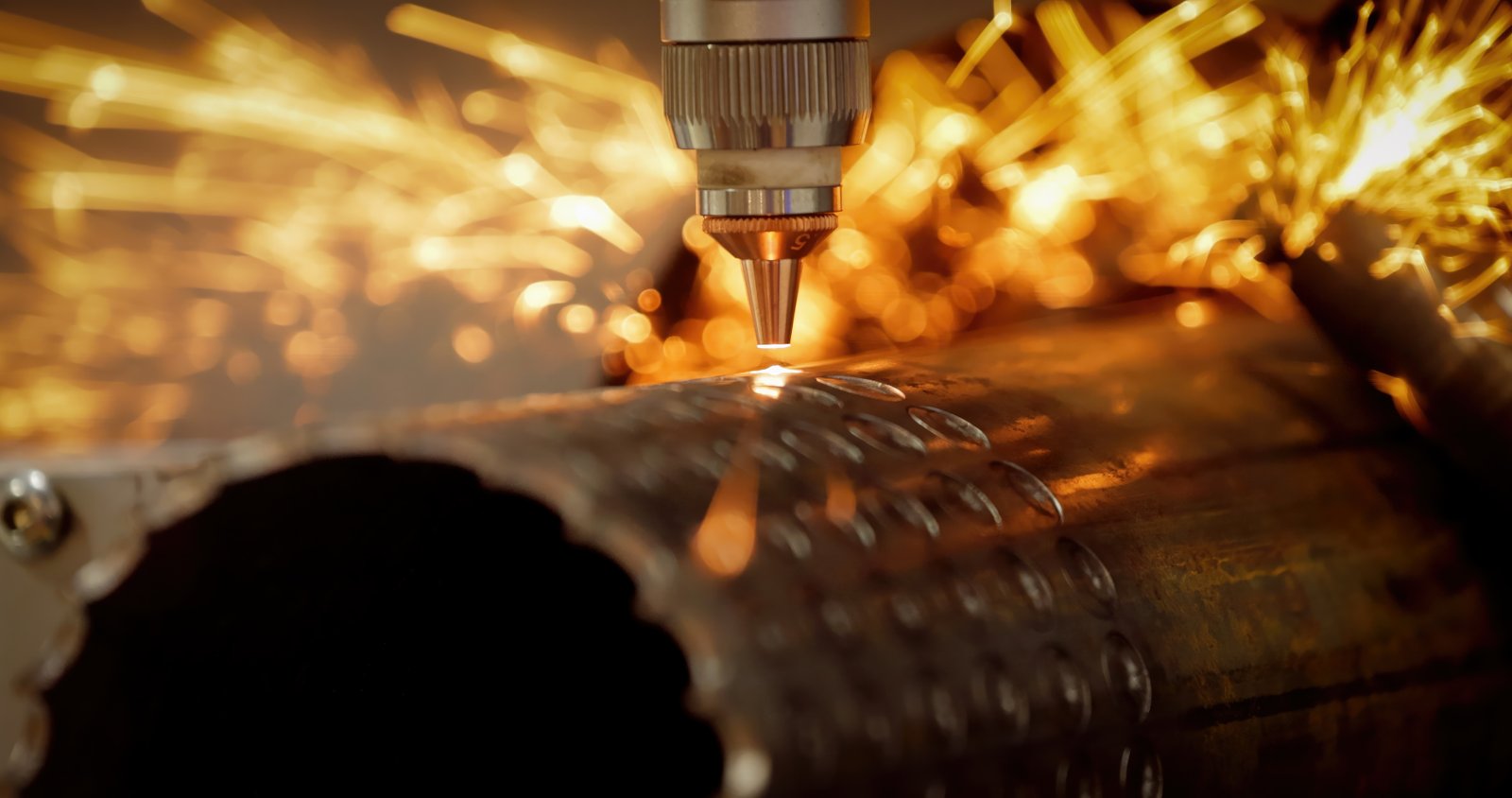
The Laser Revolution and CNC Integration
The advent of laser technology, particularly fiber lasers, marked a pivotal moment in metal tube cutting. Unlike traditional methods that rely on physical contact and mechanical force, laser cutting uses a focused, high-power laser beam to melt, burn, or vaporize material, resulting in incredibly precise and clean cuts. This non-contact process eliminates tool wear and distortion, ensuring consistent quality even with intricate geometries. Coupled with Computer Numerical Control (CNC) systems, laser tube cutting machines achieved unprecedented levels of automation and accuracy. CNC technology allows for complex designs to be programmed directly into the machine, which then precisely controls the laser head's movement, rotation, and cutting parameters. This integration translates into a remarkable increase in speed—laser cutting can be 5-10 times faster than traditional methods for complex designs—and the ability to produce parts with tolerances of mere microns, opening up possibilities for components in industries like medical equipment and specialized vehicle parts4.
For a mid-sized metal fabrication business like Ahmed Al-Farsi's, this revolution means he can now produce intricate components for architectural metalwork or vehicle parts that were previously impossible or too costly to achieve with traditional methods. The precision and speed of laser cutting allow for customized solutions, catering to the specific demands of his clients who deliver finished parts to builders, decorators, and OEMs. This capability empowers his business to expand into higher-value markets and tackle more complex projects with confidence.
MZBNL's Pioneering Innovations
At MZBNL, our 25 years of experience have culminated in three major innovations that directly address the industry's pain points and elevate the performance of laser tube cutting machines. First, our No-CAD Sistem İnovasyonu revolutionizes the operation process. Traditionally, operators wasted up to 15 days on training to learn complex 3D CAD drawings or had to send designs back to the engineering office for modifications, causing significant delays. With our No-CAD system, standard tube types and hole patterns can be processed by simply entering parameters directly into the machine interface, eliminating the need for drawing. This dramatically improves ease of use, shortens setup time, and lowers the skill threshold, allowing new operators to be fully proficient after just 1 day of on-site training. This directly alleviates pain points like "high operator turnover caused retraining burdens" for clients like Ahmed, making adoption seamless.
Second, we introduced Önden Beslemeli İnovasyon to optimize material handling. While conventional machines rely on inefficient side or rear manual loading, our optimized front-feeding mechanism automatically pulls the tube in from the front. This design increases feeding efficiency by about 40% and reduces operator labor intensity by approximately 40%, significantly enhancing overall productivity and workplace ergonomics. This means more tubes processed per hour with less physical strain on the workforce. For a high-volume facility, this translates into tangible cost savings and increased output.
Finally, our Sıfır Atık Kuyruk Malzemesi İnovasyonu tackles material utilization, a critical cost factor. Conventional laser cutting systems typically start from the tube head and generate unusable tail material at the end of the process, leading to significant waste. We redesigned the cutting logic to calculate from the rear chuck as the origin, allowing the system to eliminate leftover tail material as long as the remaining section is smaller than the product length. This "zero-tail" design maximizes material utilization, boosting cutting efficiency and significantly reducing waste, directly impacting the profitability of businesses like Ahmed's, where material cost is a major concern.
The Emergence of Smart and Digitalized Systems
Beyond the core laser and mechanical innovations, the modern smart tube cutting landscape is defined by extensive digitalization and connectivity. The integration of Internet of Things (IoT) sensors allows for real-time monitoring of machine performance, enabling predictive maintenance and minimizing unexpected downtime—a crucial advantage when every minute of production counts. Data collected from these smart systems can be analyzed to optimize cutting parameters, identify bottlenecks, and improve overall equipment effectiveness (OEE). For instance, IoT integration can reduce machine downtime by 20-30%, ensuring continuous operation.
Furthermore, multi-process integration is a hallmark of these advanced systems. Machines like MZBNL's Automatic Punching & Cutting Integrated Machine can perform not only high-speed, high-precision laser cutting but also punching and marking in a single setup, eliminating the need for multiple machines and reducing material handling. This streamlines the entire production workflow, from raw material to finished part. Unlike earlier CNC machines that, while automated, still required significant manual operator input for programming and monitoring, today's smart systems are designed for greater autonomy, ease of operation, and digital integration. This comprehensive approach, combined with smart features and user-friendly interfaces, makes them essential tools for any modern metal fabrication business seeking to maximize efficiency and maintain a competitive edge.
Fiber lasers enable non-contact cuttingDoğru
Fiber lasers use focused beams to cut without physical contact, preventing tool wear and distortion.
CNC requires manual operationYanlış
CNC systems automate cutting processes through programmed instructions, minimizing manual intervention.
Challenges faced in transitioning to smart cutting technologies
Excited by the immense potential of smart cutting technologies5 but worried about the practicalities of implementation? The transition can seem daunting, with significant initial costs, a need for new skills, and potential disruptions to existing workflows. Let's address these hurdles head-on to help you plan effectively.
Transitioning to smart tube cutting technologies often presents challenges such as high initial investment costs, the need for skilled operators, integration complexities with existing workflows, and potential resistance to change within the workforce. Overcoming these requires strategic planning, comprehensive support, and a forward-thinking mindset.
My team at MZBNL often engages with clients like Ahmed Al-Farsi, who, despite recognizing the immense benefits of automation, express concerns about the practicalities of transitioning. They've invested heavily in their existing infrastructure and workforce, and the idea of disrupting that can be unsettling. Just last month, Ahmed mentioned to me, "Eric, I know these machines are the future, but what about the cost? And will my current team be able to use them?" These are legitimate concerns. It’s not just about buying a new machine; it’s about a fundamental shift in operational philosophy, managing the initial investment, upskilling staff, and ensuring seamless integration. These are legitimate pain points that we've encountered time and again with businesses looking to automate existing manual workflows. Let's delve into these challenges in detail, offering a realistic perspective on what businesses face during this pivotal transformation.
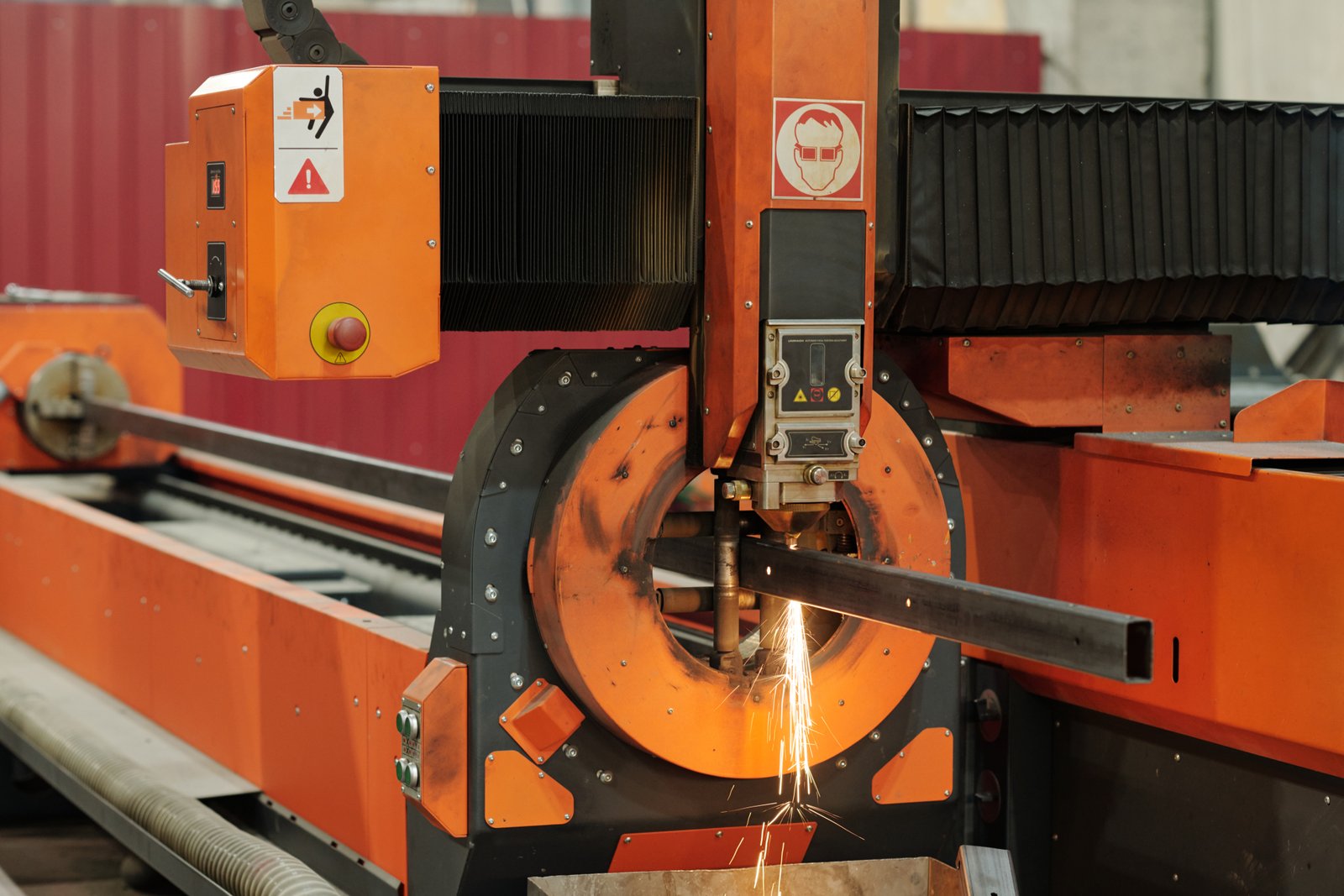
Financial Investment and ROI Concerns
One of the most significant challenges for businesses considering smart tube cutting technologies is the substantial initial financial investment. High-precision laser cutting machines, especially those with advanced automation features6, can represent a considerable capital outlay, often ranging from hundreds of thousands to over a million dollars depending on specifications. This upfront cost can deter smaller to mid-sized businesses, who may struggle to justify such a large expenditure without clear assurances of return on investment (ROI). Many business owners, like Ahmed Al-Farsi, prioritize a "high cost-performance ratio over low price," indicating a need for clear value proposition beyond just the sticker price.
However, a critical aspect of overcoming this hurdle is to view the investment from a long-term strategic perspective rather than just an immediate expense. The ROI of smart machines often comes from significant reductions in labor costs, substantial decreases in material waste (e.g., up to 15-20% less scrap due to optimized nesting and MZBNL's Zero-Waste Tail Material innovation), and a dramatic increase in production throughput. For example, while a manual process might require three operators to produce a certain volume, an automated laser machine might achieve the same output with just one operator overseeing the process, leading to substantial annual savings. Furthermore, the enhanced precision and ability to produce complex parts open up opportunities for higher-value contracts and market expansion, which might not be accessible with traditional methods, making the initial investment a gateway to new revenue streams.
Skill Gap and Workforce Adaptation
Another pressing challenge is the potential skill gap within the existing workforce7. Traditional metal fabrication relies on mechanical skills, but smart tube cutting systems demand proficiency in digital controls, CAD/CAM software, machine programming, and advanced troubleshooting. This can lead to significant retraining burdens and, in some cases, resistance to change from long-tenured employees who are comfortable with existing manual workflows. The "high operator turnover caused retraining burdens" is a pain point specifically highlighted by Ahmed Al-Farsi, making this a critical consideration for businesses like his. A study by Deloitte found that 60% of manufacturers struggle with a shortage of skilled workers for advanced manufacturing technologies, underscoring the severity of this issue across the industry.
Addressing this skill gap requires a multi-faceted approach. Companies must invest in comprehensive training programs, often provided by the machine suppliers themselves. This is where MZBNL's No-CAD System Innovation becomes a game-changer. By reducing the complexity of operation—allowing standard tube types and hole patterns to be processed simply by entering parameters—we've drastically cut down the training time needed. Instead of 15 days at an equipment factory, operators now only need 1 day of on-site training to become proficient. This significantly lowers the barrier to entry for new operators and eases the transition for existing staff, directly mitigating Ahmed's concern about retraining burdens and fostering quicker adoption of new technology within his 100+ staff operation.
Integration Complexities and Data Management
Integrating new smart cutting machines into an existing manufacturing ecosystem presents its own set of complexities, particularly regarding data management and workflow synchronization. Many businesses operate with established Enterprise Resource Planning (ERP) or Manufacturing Execution Systems (MES) that manage everything from inventory to production schedules. Introducing a new, highly digitalized machine requires seamless data flow between the machine's control system and the company's overarching digital infrastructure. Issues can arise from software compatibility, data format differences, and the need to establish secure network connections, including cybersecurity considerations. Ahmed Al-Farsi, who is "planning to automate existing manual workflows," will undoubtedly face these integration challenges as he seeks to connect new machines with his current operational systems.
Furthermore, the data generated by smart machines—such as production rates, material consumption, and machine diagnostics—needs to be effectively captured, analyzed, and utilized to maximize the machine's efficiency and inform business decisions. Without proper integration, this valuable data remains siloed, preventing the business from fully leveraging the machine's smart capabilities for optimization and predictive maintenance. This contrasts sharply with a standalone machine where data is isolated. A well-integrated system, however, can provide a holistic view of operations, enabling real-time adjustments and strategic planning. Overcoming these complexities requires robust IT infrastructure, skilled IT personnel or external consultants, and close collaboration with the machine supplier to ensure compatibility and smooth data exchange, ultimately leading to a truly cohesive and optimized manufacturing process.
| Meydan Okuma | Açıklama | Impact on Business (e.g., Ahmed's) |
|---|---|---|
| High Initial Investment | Significant capital outlay for advanced machinery. | Cash flow strain, ROI justification. |
| Skill Gap | Need for new digital and technical skills among workforce. | Retraining burden, operator turnover issues. |
| Integration Complexities | Connecting new machines with existing IT/operational systems. | Data silos, workflow disruption, cybersecurity risks. |
| Resistance to Change | Employees hesitant to adopt new processes/technologies. | Lower morale, slower adoption, inefficient use of tech. |
Smart cutting reduces material wasteDoğru
Smart tube cutting technologies can reduce material waste by 15-20% through optimized nesting and zero-waste innovations.
Manual cutting requires fewer operatorsYanlış
Automated systems typically require fewer operators (1 vs 3) to achieve the same output as manual processes.
Effective strategies to overcome integration hurdles
Feeling overwhelmed by the complexities of adopting new technology in your metal fabrication business? Poor planning can lead to costly disruptions, undermining your investment. Master the art of seamless integration with proven strategies that ensure a smooth transition and maximize your return.
Overcoming smart technology integration hurdles involves strategic planning, comprehensive operator training, phased implementation, and choosing suppliers with strong post-sales support. Prioritizing user-friendly systems and robust data management is also crucial for success, ensuring a smooth and profitable transition.
Having identified the common obstacles in adopting smart tube cutting technologies, the critical question becomes: how do we navigate them effectively8? At MZBNL, we don't just sell machines; we offer comprehensive solutions. Our 25 years in the industry, coupled with serving over 4000 diverse clients globally, from the Middle East to Europe, have provided us with invaluable insights into successful implementation strategies. We understand that each client, whether a metal pipe processing factory or an automotive parts producer, faces unique circumstances, but the core principles for a smooth transition remain consistent. For instance, we helped a client in Saudi Arabia, whose pain points were similar to Ahmed Al-Farsi's, successfully automate their railing production line through a carefully phased approach. From pre-sales consultation to after-sales support and spare parts availability, our approach is always tailored to mitigate risks and maximize the benefits for our partners. Let's explore the actionable steps that can turn potential pitfalls into pathways for progress and profitability.
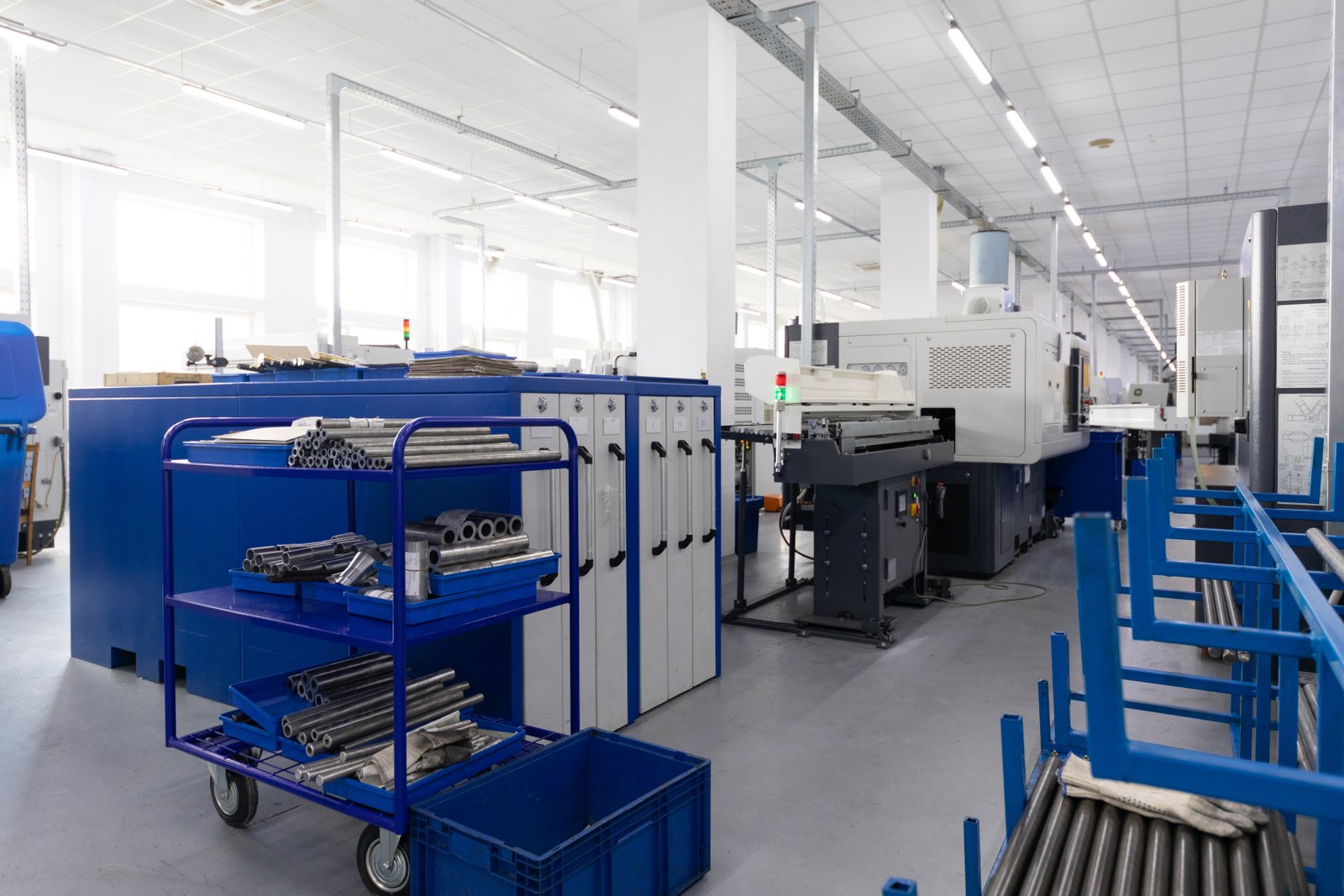
Strategic Planning and Phased Implementation
The most effective way to approach technology integration is through meticulous strategic planning and a phased implementation. This involves conducting a thorough needs assessment to identify specific production bottlenecks, current capabilities, and future growth objectives. For businesses like Ahmed Al-Farsi’s, who is "planning to automate existing manual workflows," this means pinpointing which production lines or specific products would benefit most from initial automation. Instead of a "big bang" approach, which can be highly disruptive, a phased rollout—starting with a pilot program or integrating one machine at a time—allows businesses to learn, adapt, and refine their processes gradually.
This incremental approach minimizes risks, reduces the financial burden of a large-scale immediate investment, and allows the workforce to adapt without being overwhelmed. Data from industry reports suggests that companies adopting a phased implementation for new technologies9 report up to 30% fewer disruptions and a smoother transition compared to those attempting a full overhaul. For Ahmed, this could mean initially purchasing one MZBNL Laser Tube Cutting Machine with automatic feeding and punching capabilities to automate his most critical product lines, such as standard railing components or specific auto parts. Once this initial phase demonstrates success and quantifiable ROI, he can then scale up, integrating more machines or expanding automation to other areas of his business. This measured approach not only builds internal confidence but also provides a clear pathway for sustainable growth, potentially leading him to explore becoming a regional distributor for MZBNL in the Gulf region.
Comprehensive Training and Skill Development
Mitigating the skill gap is paramount for successful technology adoption. The most effective strategy is to invest heavily in comprehensive training programs for the existing workforce. This involves more than just a basic overview; it requires hands-on practical training that familiarizes operators and maintenance staff with the new machine’s interface, operational procedures, and troubleshooting techniques. Many reputable suppliers, including MZBNL, offer extensive training as part of their service package. This often includes on-site training to ensure the team is comfortable operating the machine in their own facility.
This is where MZBNL truly shines in addressing a key pain point for clients like Ahmed Al-Farsi: "high operator turnover caused retraining burdens." Our pioneering No-CAD System Innovation drastically simplifies the operational learning curve. Whereas traditional systems might require an operator to spend 15 days at the equipment factory to learn complex CAD programs, our system allows operators to manage standard tube types and hole patterns by simply entering parameters. This means operators now only need 1 day of on-site training to become proficient. This streamlined training process not only reduces the time and cost associated with upskilling but also boosts employee confidence and reduces resistance to adopting new technology, making the transition smoother and ensuring that Ahmed's staff can quickly become productive with their new MZBNL machine.
Partnering with the Right Supplier and Post-Sales Support
The success of any technology integration hinges significantly on partnering with the right supplier. It’s not just about the machine; it’s about the long-term relationship and the support ecosystem the supplier provides. A reputable supplier like MZBNL, with its "Integrated R&D, manufacturing, sales, and service" business model and 25 years of experience, offers a distinct advantage. We emphasize "proven technology and global references," which is a key buying preference for Ahmed Al-Farsi, as it provides assurance of quality and reliability. Crucially, a supplier's commitment to "after-sales service and training support," "spare parts availability," and "remote diagnostics" can make or break the success of the integration. Ahmed's previous pain point of "Equipment from some suppliers lacked local service support" highlights the critical need for a robust support network.
MZBNL’s extensive reach, with exports to Southeast Asia, the Middle East, Europe, and North America, ensures that support is accessible. We offer comprehensive post-sales support that includes on-site training, remote diagnostics to quickly address technical issues, and a readily available supply of spare parts, minimizing downtime. Furthermore, the presence of a "local agent or distributor" can provide immediate assistance, which is highly valued by international clients like Ahmed. His interest in becoming a regional distributor for MZBNL if the machine performs well and support is reliable further underscores the importance of a strong supplier relationship. Choosing a partner that views success as a collaborative effort, providing turnkey solutions that are easy to install and operate, is the most effective strategy to overcome integration hurdles and ensure long-term operational excellence.
| Supplier Evaluation Criteria | Importance (High/Med/Low) | MZBNL's Offering (Example) |
|---|---|---|
| Proven Technology/References | Yüksek | 30+ patents, 4000+ global clients, 25 years experience |
| After-Sales Service/Training | Yüksek | On-site training (1 day w/ No-CAD), remote diagnostics |
| Spare Parts Availability | Yüksek | Global network, readily available parts |
| Kullanım Kolaylığı | Yüksek | No-CAD System Innovation, Smart/Digitalized systems |
| Customization Options | Orta | Cost-effective customized solutions |
| Local Presence | Orta | Main export countries include Middle East, distributor network |
| Cost-Performance Ratio | Yüksek | High-speed, high-precision, zero-waste, efficient |
Phased implementation reduces risksDoğru
A phased approach allows businesses to adapt gradually, minimizing disruptions and financial risks compared to a full overhaul.
All suppliers offer equal post-sales supportYanlış
Supplier support varies significantly; MZBNL provides comprehensive post-sales services including training and spare parts availability, which are crucial for successful integration.
Cutting-edge innovations and recommendations for future enhancements
Are you looking to future-proof your metal fabrication business and stay ahead of the curve? Stagnation means falling behind in a rapidly evolving market, risking obsolescence and reduced competitiveness. Explore the next frontier of smart tube cutting to unlock unparalleled potential.
Future enhancements in smart tube cutting will focus on greater AI integration for autonomous operation, advanced robotics for full automation, and enhanced material science applications. These innovations promise even higher efficiency, predictive capabilities, and sustainable manufacturing practices, redefining industry benchmarks.
As someone who has dedicated 25 years to this industry, I can tell you that innovation never stops. At MZBNL, our integrated R&D model10 ensures we are constantly pushing the envelope, anticipating the needs of clients like Ahmed Al-Farsi even before they fully materialize. We're not content with just meeting today's demands; we're focused on shaping tomorrow's possibilities. We are actively exploring the integration of our laser tube cutting machines with even more advanced AI modules that can predict maintenance needs with greater accuracy, allowing for proactive servicing and near-zero downtime. The future of metal tube cutting isn't just about faster machines; it's about smarter, more autonomous, and more sustainable systems that redefine industrial capabilities, offering unprecedented levels of precision and efficiency. Let's gaze into the crystal ball and explore the exciting advancements on the horizon and what they mean for the metal fabrication landscape.
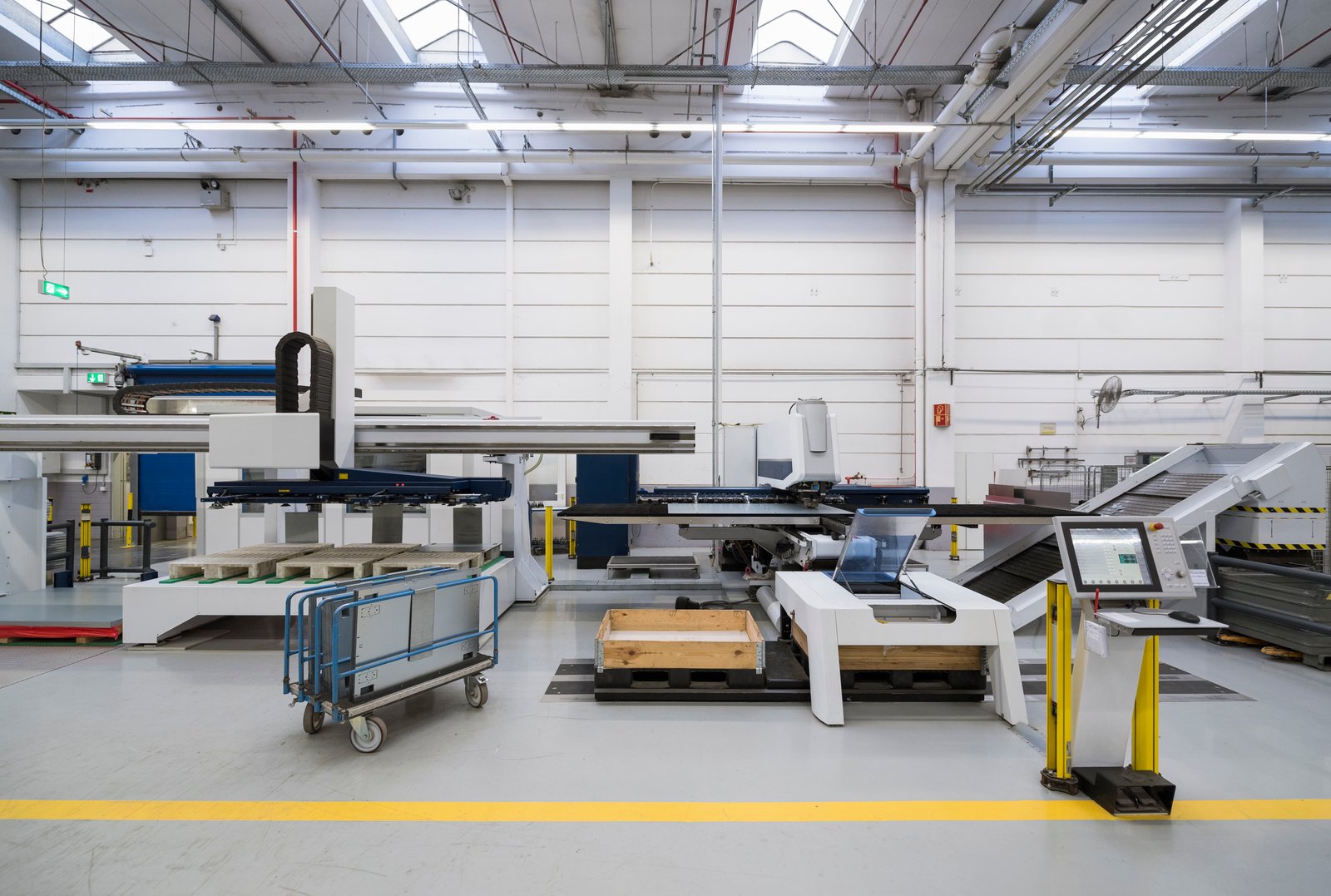
AI, Machine Learning, and Autonomous Operation
The next wave of innovation in smart tube cutting will be driven by deeper integration of Artificial Intelligence (AI) and Machine Learning (ML). These technologies are poised to transform machines from automated tools into truly autonomous systems. Imagine a laser tube cutting machine that can self-optimize its cutting parameters based on real-time feedback from the material, adjusting power, speed, and gas flow to achieve the perfect cut every time, even with slight variations in material quality. AI-driven systems are expected to reduce material waste by an additional 5% beyond current optimizations and improve overall equipment effectiveness (OEE) by 10-15% through continuous self-correction and optimization.
Furthermore, AI will power kesti̇ri̇mci̇ bakim11 with unparalleled accuracy, moving beyond simple sensor data to analyze complex operational patterns and anticipate potential failures before they occur. This means fewer unexpected breakdowns and maximized uptime, a critical factor for high-volume production environments. For a forward-thinking business owner like Ahmed Al-Farsi, whose "hands-on decision-maker" approach leads him to pursue automated solutions, the promise of fully autonomous lines will further reduce operator dependence and free up skilled labor for more strategic tasks, ultimately enhancing the efficiency and profitability of his metal fabrication business.
Robotics, Advanced Automation, and Digital Twins
Beyond the cutting process itself, future enhancements will see an explosion of robotics and advanced automation integrated seamlessly with tube cutting systems. Robotic arms are already being used for automated loading and unloading of raw tubes, but the next step involves robotic post-processing—such as automated deburring, welding, or even assembly of cut components directly after the cutting process. This holistic automation creates a true "lights-out" manufacturing environment where human intervention is minimal, significantly increasing throughput and reducing labor costs. For instance, fully automated lines with integrated robotics can increase throughput by up to 50% in certain applications, especially for repetitive tasks.
Coupled with these physical advancements is the growing importance of "digital twins." A digital twin is a virtual replica of a physical machine or entire production line, created with real-time data from sensors. This allows manufacturers to simulate various scenarios, optimize cutting paths, test new designs, and predict machine performance without interrupting actual production. This capability provides an invaluable tool for continuous improvement, allowing businesses to identify efficiencies and troubleshoot potential issues in a virtual environment before implementing them on the factory floor, thereby reducing costly errors and speeding up time-to-market. This represents a significant leap from current MZBNL auto-feeding systems to fully robotic material handling systems that encompass the entire production flow.
Sustainability, New Materials, and Integrated Workflows
The future of metal tube cutting is also intrinsically linked to sustainability and the ability to process new, advanced materials. Innovations will focus on even greater energy efficiency, with next-generation lasers consuming less power while delivering higher output. MZBNL’s Sıfır Atık Kuyruk Malzemesi İnovasyonu12 is a significant step in this direction, and future systems will push this further, aiming for near-zero material waste across the entire production cycle, leveraging advanced nesting algorithms and adaptive cutting strategies. The drive for greener manufacturing will also involve the development of machines capable of efficiently cutting exotic and lightweight materials like composites and specialized alloys, which are becoming increasingly prevalent in automotive, aerospace, and medical industries.
Finally, the trend towards fully integrated workflows will accelerate. This means not just linking machines within a single factory but connecting entire supply chains, from material suppliers to end-product assembly. Such integration, powered by robust data exchange and cloud computing, will enable unprecedented levels of efficiency, responsiveness, and customization. For MZBNL, continued investment in R&D to explore further integration of punching and welding processes on a single, more compact line will be key to maintaining our industry leadership and providing the comprehensive, future-ready solutions that sophisticated clients like Ahmed Al-Farsi are seeking to grow their business and potentially become exclusive distributors in their regions.
| Future Technology | Core Concept | Potential Impact | Relevance to MZBNL / Clients |
|---|---|---|---|
| AI-Driven Optimization | Self-adjusting cutting, predictive maintenance | Reduced waste (5% more), 10-15% OEE improvement | Enhanced efficiency, lower operating costs for clients. |
| Advanced Robotics | Automated loading, post-processing | Up to 50% increased throughput | Streamlined production, reduced labor dependency. |
| Digital Twins | Virtual simulation and optimization | Reduced errors, faster R&D for new products | Improved decision-making, rapid new product development. |
| Near-Zero Waste | Enhanced material utilization | Maximize raw material value, environmental benefits | Cost savings, aligns with sustainability goals. |
| Multi-Material Cutting | Adapting to exotic alloys, composites | Expanded market opportunities, high-value component production | Diversify product offerings, enter new industries. |
AI improves cutting precisionDoğru
AI can adjust cutting parameters in real-time based on material feedback, achieving more precise cuts.
Digital twins replace physical machinesYanlış
Digital twins are virtual replicas used for simulation and optimization, not replacements for physical machines.
Sonuç
From labor-intensive manual methods to today's intelligent laser systems, metal tube cutting has transformed with innovations like MZBNL's pioneering No-CAD, front-feeding, and zero-waste technologies. Embracing these advancements and strategic integration, supported by comprehensive training and trusted partnerships, is key for manufacturers like Ahmed Al-Farsi to achieve unparalleled efficiency, precision, and future-ready operations, ensuring sustained competitiveness.
-
Discover industry-changing innovations in tube cutting technologies ↩
-
Understand how automation boosts efficiency in manufacturing processes ↩
-
Learn about the benefits global clients gain from laser cutting advancements ↩
-
Discover industries significantly impacted by advances in laser cutting ↩
-
Explore smart cutting technologies and their applications in modern manufacturing ↩
-
Understand the advantages of automation in laser cutting and its impact on efficiency ↩
-
Learn about the skill gap challenges in adopting advanced manufacturing technologies ↩
-
Discover proven methods to navigate technological integration smoothly and efficiently ↩
-
Learn about the advantages of phased implementation for minimizing risk and disruptions ↩
-
Discover how integrated R&D at MZBNL leads to innovative solutions for metal fabrication. ↩
-
Learn how AI enhances predictive maintenance to maximize uptime in metal fabrication. ↩
-
Understand the benefits of zero-waste tail material innovation for sustainable manufacturing. ↩
Sorularınız mı var veya daha fazla bilgiye mi ihtiyacınız var?
Kişiselleştirilmiş yardım ve uzman tavsiyesi için bizimle iletişime geçin.
